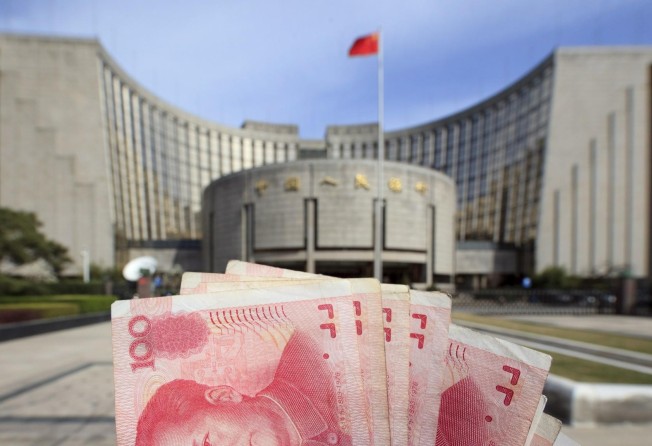
China considers plan to widen yuan trading limit after major Communist Party meeting
Move to liberalise exchange rate controls follows growing pressure for reform, but critics warn that it could be seen as a largely symbolic gesture

China’s central bank is considering a widening of the yuan’s trading band following an important Communist Party meeting this year – a largely cosmetic move that would burnish its reform credentials as official policy focuses on reducing debt.
The People’s Bank of China (PBOC) could widen the yuan trading range to allow it to rise or fall by 3 per cent against the dollar from the daily mid-point rate set by the central bank, according to four sources familiar with internal policy discussions. The current band allows for 2 per cent fluctuations.
The measure would allow the central bank to argue the yuan’s liberalisation was on track and could be useful in trade talks with Washington. However, tight controls on capital outflows and the level at which the yuan starts trading each day would reduce its impact, the sources said.
“A yuan band widening is possible. There could be some internal consensus on this,” said one source who advises the government on policy. “But the impact won’t be big – it may just be a gesture to express the commitment to long-term market reform.”
Indeed, there seems to be little immediate pressure to widen the band – the yuan has never tested the 2 per cent daily limit that was introduced in March 2014.

The adoption of an undisclosed “counter-cyclical factor” in May gave the central bank greater control in setting the daily level around which the yuan can trade, but raised questions about its commitment to opening up the currency.
“We are going backward by adding a counter-cyclical factor,” said the policy adviser. “It’s very clear that the leadership wants exchange rate stability.“
However, there have been growing calls for yuan liberalisation, a favoured reform during recent Party Congresses, which are held every five years. The yuan trading band was widened in 2007 and 2012 before the party meetings.
One difference this year is that the change would likely come after the congress as officials have put a premium on market and economic stability this year, according to the sources, who requested anonymity due to the sensitivity of the issue.
The yuan has gained just over 3 per cent against the dollar so far this year, following a 6.5 percent drop in 2016 – the biggest annual drop since 1994.
The PBOC did not respond to requests for comment.

Over the past month, the bank has been making the case for greater exchange rate liberalisation, even as its control has increased and it has been suspected of using market intervention to push the yuan up against the dollar.
The Financial News, a paper run by the central bank, said China should widen the trading band, and a member of the bank’s monetary policy committee said in the paper that the band should be widened and intervention reduced.
The central bank last widened the yuan’s daily trading band in March 2014, doubling it to 2 per cent.
Before that, it doubled the band to 1 per cent in April 2012 and widened it to 0.5 per cent from 0.3 per cent in May 2007 - both years when a Party Congress was held. In 2007, the move was also seen as a symbolic gesture ahead of US-China trade talks.
“This is what the Chinese leadership is good at – they like pushing reforms in a controlled environment,” said another source familiar with the discussions on the yuan. The source added that any move before the party meeting, which is expected in the fourth quarter, would not be surprising.
An important part of stabilising the yuan has been a crackdown on capital outflows – which authorities have presented as better enforcement of existing rules – and insiders expect that to continue.
“We will not change the standard management measures on cross-border capital flows in the short term, especially at a time when the external picture is unclear,” said another source close to the PBOC policy discussions.
China’s foreign exchange reserves dropped by nearly US$1 trillion from US$3.99 trillion between mid-2014 and January this year, but have since steadied just above US$3 trillion.
Data from the Commerce Ministry showed China’s non-financial outbound direct investment nearly halved in the first half of 2017 as curbs over capital outflows took effect.